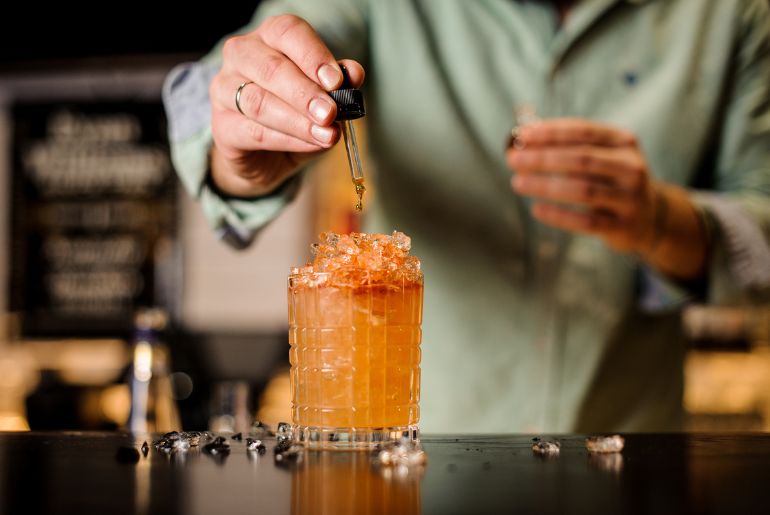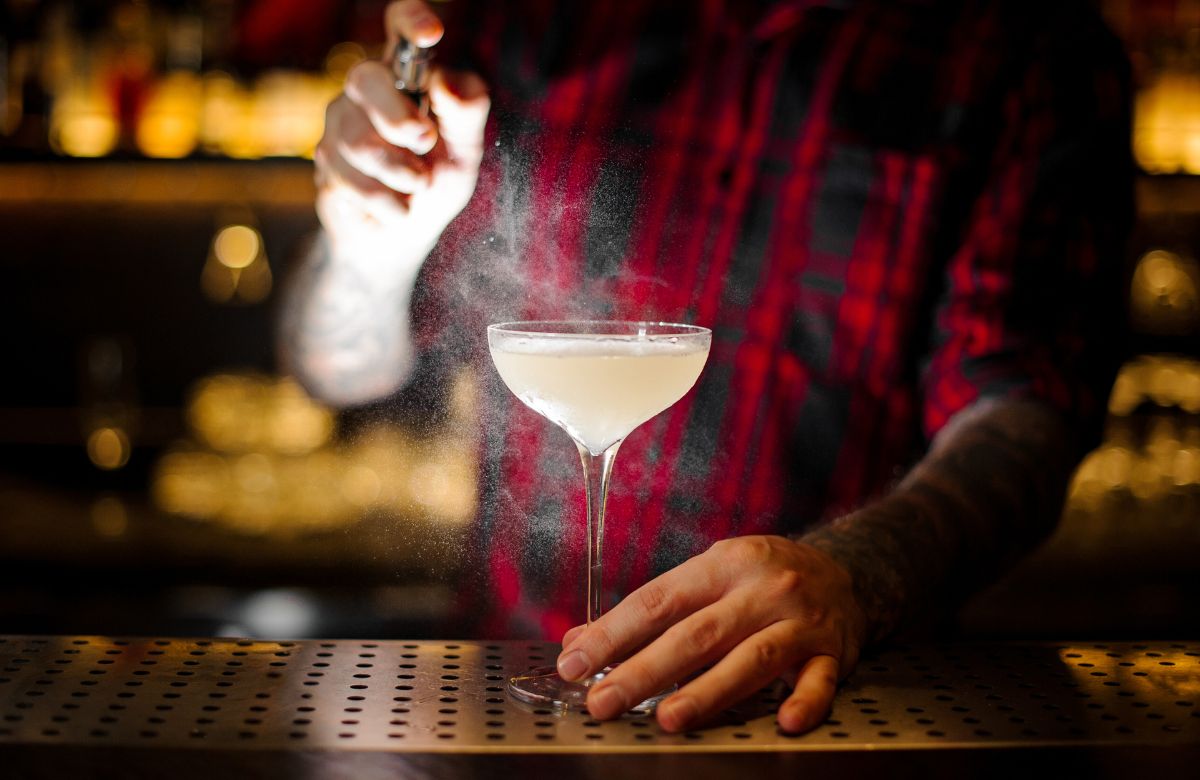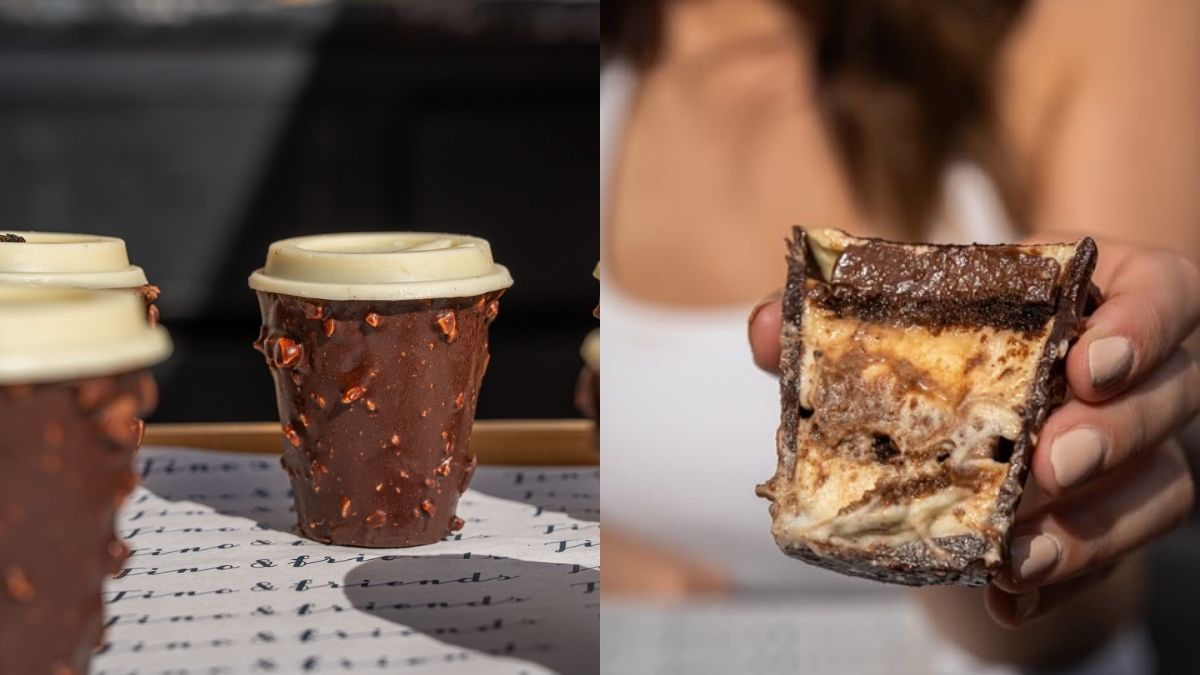“Over the past decade, there has been a growing fondness for the bitter flavour among patrons and guests,” says Tommaso Cecca, Head of Camparino Licencing and Mixology. Last month, Mumbai’s Hakkassan hosted a special bar takeover by Campari with Milan’s top mixologists from the celebrated Camparino Bar, which was also listed under The World’s 50 Best Bars in 2023. Of course, a special cocktail menu was crafted in celebration of Campari, the iconic Italian Bitter. Cocktail lovers have obviously noticed a remarkable resurgence in bitters use in recent years. Once a forgotten ingredient, they are again the stars of mixology.
The Bitters Boom

From humble medicinal tonics to essential ingredients in the modern mixologist’s toolkit, bitters have transitioned. The resurgence of bitters has led to a boom in the production and availability of these once-obscure ingredients. Artisanal bitters producers have emerged, offering a wide range of unique flavours and infusions. “Bitters hold a unique power to elevate cocktails. The allure of bitterness goes beyond taste; it embodies extensive knowledge and expertise, with a rich
history spanning over 150 years,” he explains.
The resurgence of bitters has led to a boom in the production and availability of these once-obscure ingredients. Artisanal bitters producers have emerged, offering a wide range of unique flavours and infusions. As people become more conscious of what they consume, they are seeking out ingredients that are not only delicious but also derived from nature. This trend aligns perfectly with the use of bitters in cocktails.
“There are multiple variations of bitters that exist and each of them is capable of complementing various liquors or spirits in distinct ways. The crucial factor lies in achieving a delicate equilibrium between bitterness and bittersweetness, which contributes significantly to the creation of an impeccable cocktail,” Cecca shares.
Also Read: What Is Hugo Spritz, Internet’s Newly Declared Drink For European Summers? Recipe Inside!
Thanks To Craft Cocktail Revolution
The Renaissance in the cocktail world owes much to the craft cocktail movement. “Over the past half-decade, the landscape of cocktail culture has undergone a profound transformation. A significant shift towards innovation and novel approaches has emerged, with a heightened emphasis on delivering distinctive experiences to patrons, a direct outcome of the industry’s continuous evolution,” he answers the reason.

Bartenders, inspired by the classic recipes of the past, began reimagining cocktails as a culinary art form. “The allure of vintage cocktails has been invigorated through processes like oak barrel ageing, infusing them with a timeless
character and enriching their flavours.” Cecca reasons why.
The resurgence of bitters has led to a renewed interest in classic cocktail recipes that had long been forgotten. Classics like the Sazerac, the Aviation, and the Pink Gin have found their way back onto cocktail menus, much to the delight of cocktail enthusiasts. “At Camparino, we’ve embraced the trend of rejuvenating vintage cocktails, exemplified by the global ascent of the Negroni as the premier cocktail,” he shares. The Italian bar has an exceptional cocktail that combines Mezcal, Campari, and Agave Quinoto which he addresses as a one-of-a-kind fusion blending zesty notes from Italian liqueurs with the smoky essence of Mezcal. “The convergence of disparate elements in the realm of liqueurs and spirits stands as a significant trend.”
Bitters Are Loved By Home Bartenders Too
Moreover, not just bartenders, this has also encouraged home enthusiasts to experiment with crafting their own signature cocktails. “The trio of fundamental elements comes into play for someone to learn the art of cocktail making. First and foremost is the dedication to study and information. The second is the infusion of creativity, and finally, the essential catalyst is an infusion of passion. These elements combine to produce truly remarkable and novel creations,” he advises when it comes to using bitters in cocktails in one’s home bartending repertoire.

For example, you might use handcrafted lavender bitters to infuse a classic gin and tonic with a subtle floral note, transporting the drinker to a fragrant garden in bloom. “Within the realm of bitters, a multitude of variations exists. There needs to be a remarkable balance between bitterness and bittersweetness. The exact balance can vary, contingent upon the quantity employed in your cocktails. This aspect is open to interpretation and the boundless realms of your creativity,” he suggests.
Also Read: What Are Bitters? Their Types And Role In Cocktails
However, as bartenders continue to innovate and explore the possibilities of bitters, and as consumers seek out unique and flavourful cocktail experiences, looks like bitters will remain a driving force in the ever-evolving world of mixology!
Cover image credits: Canva
First Published: September 07, 2023 7:12 PM



